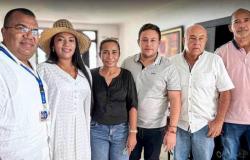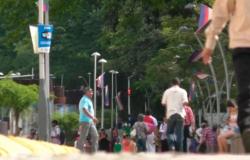The exercise of control of land and livestock carried out by the regime’s agricultural authorities since March continues to expose the illegalities in the sector and the restrictions imposed by decision-makers on production in Cuba’s fields. In this sense, Almost 2,000 illegalities in the livestock sector and some 6,800 in terms of the use, ownership and possession of land were detected during inspections in the province of Pinar del Ríoreported the official newspaper Granma.
Lázara Caridad García Plasencia, head of the Department of Genetics and Livestock Registration in the Delegation of Agriculture of the territory, explained that “The main irregularities have been related to missing animalsundeclared births, and people who have died and continue to appear in the records as owners of livestock.” He said that, in the case of larger livestock, some 4,300 producers have been inspected.
Among the causes for “serious difficulties exist in the control of livestock farming” in the provincethe official pointed out that Pinar del Río “only has 18 livestock control inspectors to serve a universe of more than 21,700 producers. Hence, it is impossible to reach 100%.”
Regarding land, García Plasencia stressed that The main irregularities among the more than 9,600 tenants visited lie in illegal constructionswhose number is greater than 4,000.
The official explained that, in Pinar del Río, according to records, “there are 209,532 heads of cattle and 71,900 heads of horses, but in practice these figures may be different.”
“The objective is to have exact information on the land that is in use today, and that which is idle, and also of the livestock mass, which serves as a tool for the actions that are decided based on compliance with the Law of Food Sovereignty and Security. In order to make decisions, we need to know what we really have,” said García Plasencia to justify the massive exercise of control that, until September 30, the regime deploys throughout the Island.
In April of this year, even the official newspaper Granma recognized that in Cuba “livestock areas have been destroyed” and with them the once flourishing industry. Livestock farming in Cuba “is bad because we have been allowing it to be destroyed for many years,” said farmer Miguel Valdés Carmenate in an interview with the newspaper.
Official figures show that The Cuban Government relegates the agricultural sector to abandonmentwhile prioritizing hotels and tourist facilities. This is the government’s investment plan in the midst of a chronic food shortage that is driving prices up to levels that are unaffordable for most of the population.
The actions of the Ministry of Agriculture demonstrate, once again, the regime’s insistence on meticulously control the lives of producersleaving in the background the incentives to improve the disastrous rates of agriculture and livestock on the Island.
In a recent analysis on the subject, published in DIARIO DE CUBA, Ángeles Rosas wrote: “More than a dozen regulations have been established in Cuba around agricultural activity, but they have achieved little in the way of satisfying the needs of the population. , among them food, whose prices have put the pockets and nutrition of Cubans to the limit. Many of these laws, far from giving freedom to farmers, ranchers and peasants, restrict the activity, “They perfect state control and prioritize state forms over private ones.”






